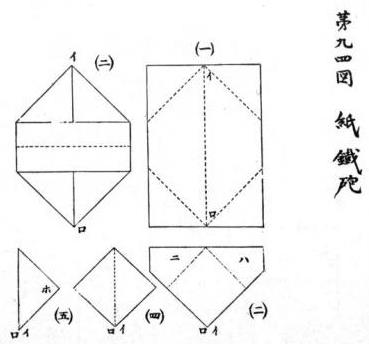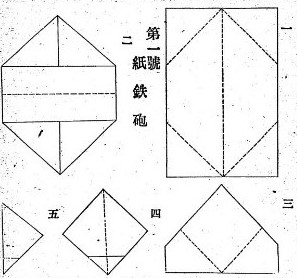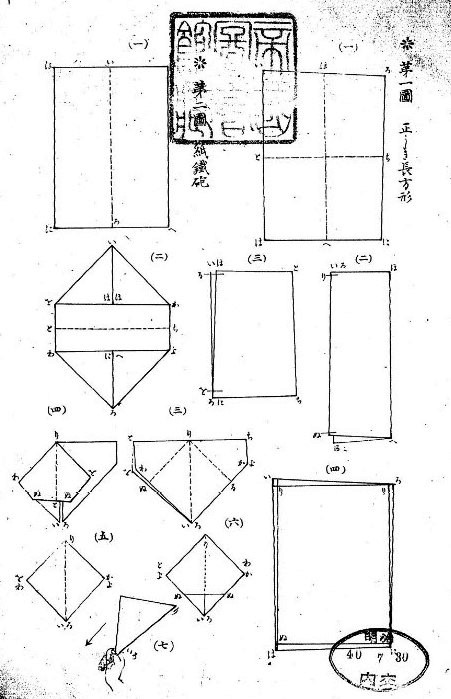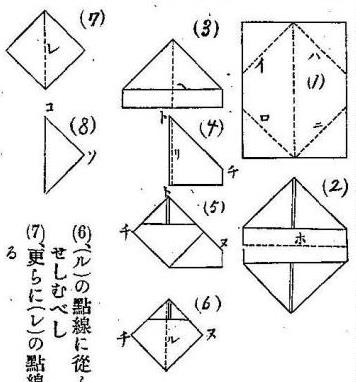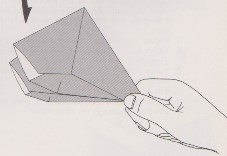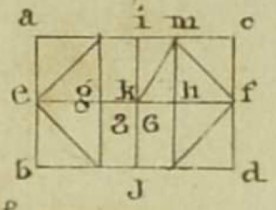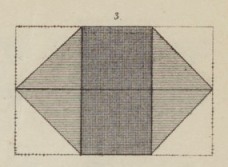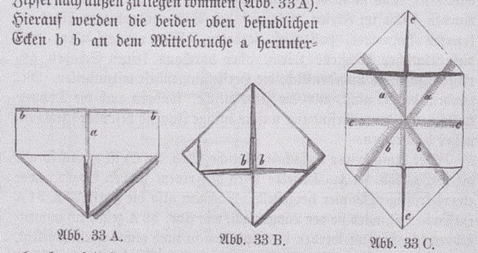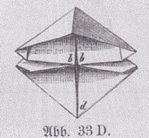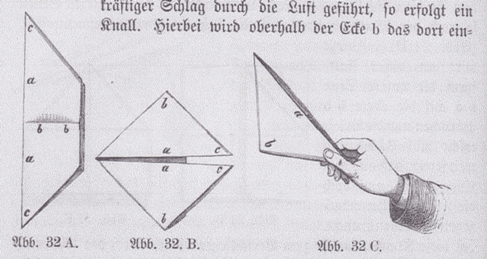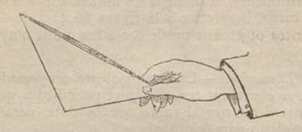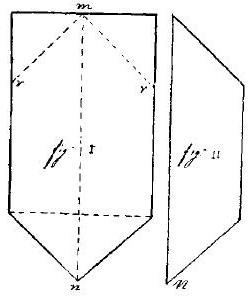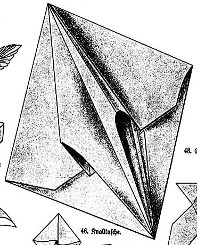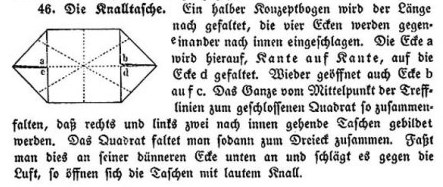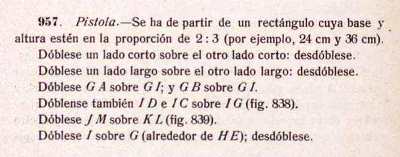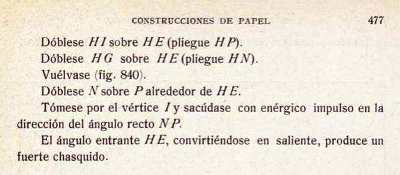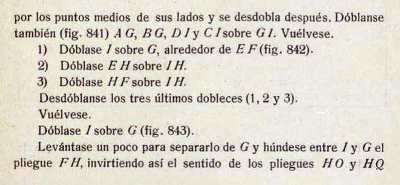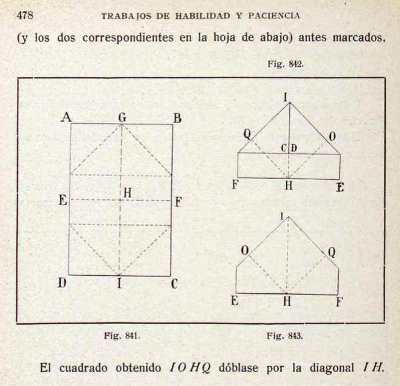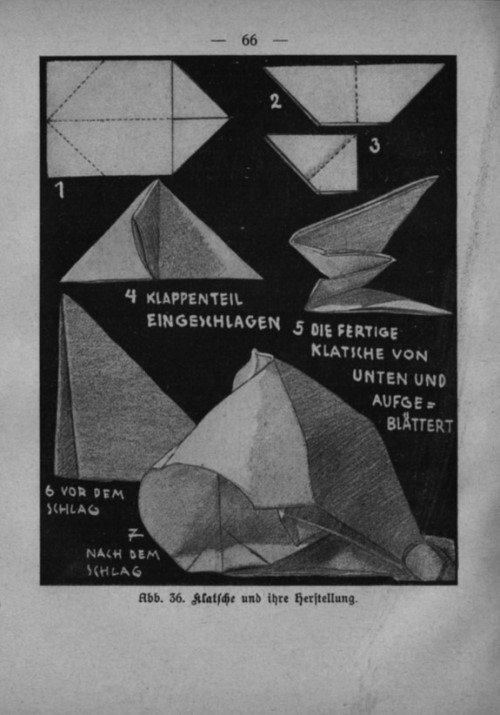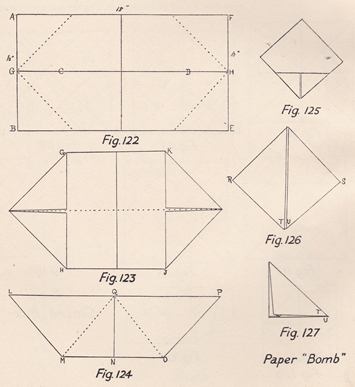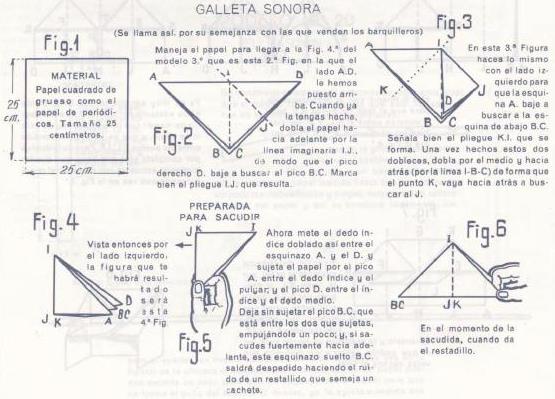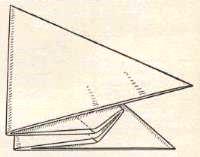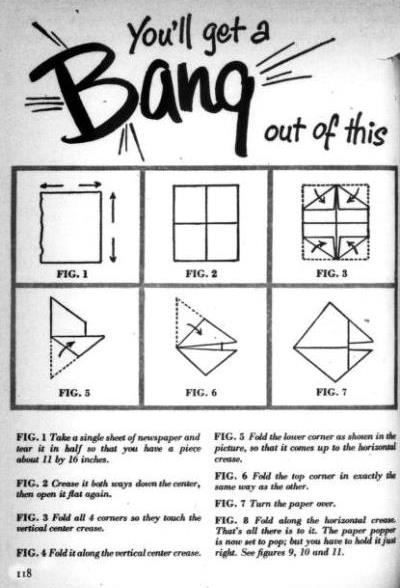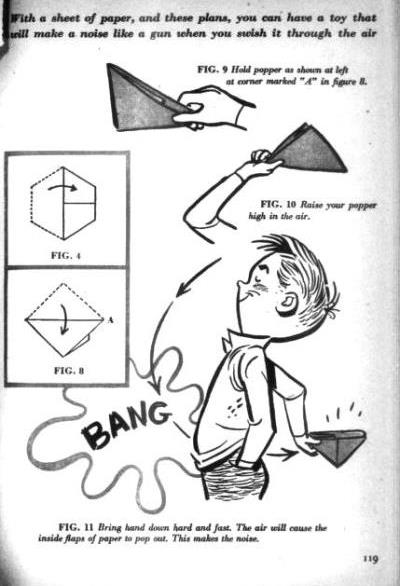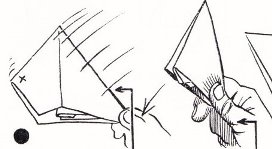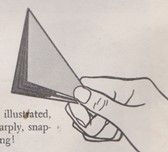| The Public Paperfolding History Project
Last updated 5/8/2025 x |
|||||||
| The Paper Banger | |||||||
| This
page is being used to collect information about the
history of the Paper Banger. Please contact me if you
know any of this information is incorrect or if you have
any other important information that should be added.
Thank you. There are two closely related forms of the Paper Banger which produce either one or two bangs. For this reason I call them the Single-barrelled Paper Banger and the Double-Barrelled Paper Banger. I have not separated their occurrences into separate chronologies. There is, however, a separate page about the simpler, and earlier, design I call the Primitive Paper Banger. ********** Lewis Carroll's diary mentions paperfolding on several occasions. The entry for October 8th 1890 includes the words '... and the little boy Francis Epipharius (Piffy), a very bright little creature, who taught me how to fold paper pistols ...' There are three other subsequent entries which record Lewis Carroll teaching these paper pistols to other children. Unfortunately we have no evidence to tell us what these paper pistols were. It is probable that they were paper bangers, either of the primitive or more sophisticated varieties, or one of the designs on the paper pistols page, or something else entirely. ********** In China (and in publications by Chinese authors) 1914 Diagrams for this design appear in 'Zhe zhi tu shuo' (Illustrated Paperfolding), compiled by Gui Shaolie, which was published by the Commercial Press in Shanghai in Ming guo 3 (1914).
********** In Japan (and in publications by Japanese authors) 1903 The Paper Banger appears in 'Jinjo Kouto Shogaku Shuko Seisakuzu' (Handicrafts for ordinary higher elementary schools) by Hideyoshi Okayama, which was published by Rokushiro Uehara in Tokyo in 1903.
********** The design also appears: 1904 In 'Shukouka Kyoju Shishin: Maiji Haitou' by Hyojiro Nakagaki, which was published by Kenseikai in Tokyo in 1904.
********** 1907 In 'Shukou Tebikigusa : Kokumin Kyoiku Origami Yuihimo' by Ishin Nishigaki, which was published by Meguro Shoten in Nagaoka in 1907.
********** 1908 In 'Origami zusetsu' (Illustrated Origami) by Sano Shozo, which was published in Tokyo in 1908.
********** 1944 In 'Origami Shuko' by Isao Honda, which was published in 1944.
********** 1951 In 'Origami to Kirinuki' by Saburo Ueda, which was published by Kokkado in Tokyo, most probably in 1951.
********** 1959 As 'A Popper' in 'Origami: Japanese Paper Folding - Sakura Book' by Isao Honda, which was published in English by The Asahi Origami Club in 1959.
********** 1960 As 'A Popper' in 'All About Origami' by Isao Honda, which was published by Toto Bunka Company, Limited in Tokyo in 1960.
********** 1965 The double-barrelled design appears, as the 'Paper Cracker' in 'The World of Origami' by Isao Honda, which was published in the USA by Japan Publications Trading Company in 1965.
********** 1967 As 'Paper Cracker' in 'Origami Holiday' by Isao Honda, which was published by Japan Publications Inc in Tokyo in 1967.
********** In Europe and the Americas 1840 As far as I know this design first appears in 'The School Boy's Holiday Companion' by T Kentish, which was published by Relfe and Fletcher in London in 1840
********** 1863 'De Kleine Papierwerkers 1: Wat men van een stukje papier al maken kan: Het vouwen' (The Small Paperwork 1: What one can make from a piece of paper: Folding) by Elise Van Calcar, which was published by K H Schadd in Amsterdam in 1863, contains diagrams for the double-barrelled version of the banger, under the title of 'De klapper' (the clapper).
********** 1876 Diagrams for both versions appear in 'Des Kindes Erste Beschaftigungsbuch' by E Barth and W Niederley, which was first published in Bielefeld and Leipzig, and the foreword of which is dated October 1876.
***
It is interesting to note that in these instructions the diagonal creases are not diagonals of the central single layer, as they might be in a modern version of the design. Widening the diagonals increases the ease with which the banger can be made to fire. ********** 1890 As 'Claque' in 'Le travail manuel a l'ecole et dans la famille' by MM, Bertrand, Toussaint and Gombert, which was published by Loucene, Oudin et ces Editeurs in Paris in 1890.
********** 1891 This version of the banger also appears in 'Pleasant Work for Busy Fingers' by Maggie Browne, which was published by Cassell and Company in London in 1891. This book is an English version of 'Des Kindes Erste Beschaftigungsbuch' enhanced by the addition of a few extra designs. ********** The design also appears: 1904 As 'Tronadora' (Thunder) in 'Guia Practica del Trabajo Manual Educativo' by Ezequiel Solana, which was published by Editorial Magisterio Español in Madrid in 1904.
********** 1907 As 'Trueno (Thunder), but also variously el tronera or tronador, in an article titled 'El trabajo manual escolar' by Vicente Casto Legua in issue 191 of the Spanish magazine 'La Escuela Moderna' for February 1907, which was published in Madrid by Los Sucesores de Hernando.
********** 1910 As 'Knalltasche' (pop bag) in Part 2 'Das Flechten' of 'Die Frobelschen Beschaftigungen' by Marie Muller-Wunderlich, which was published by Friedrich Brandstetter in Leipzig in 1910.
It is interesting to note that in these instructions the diagonal creases are not diagonals of the central single layer, as they might be in a modern version of the design. Widening the diagonals increases the ease with which the banger can be made to fire. ********** 1910 As 'Klatsche' (single barrelled)) and 'Doppelklatsche' (double-barrelled) in 'Allerlei Papierarbeiten' by Hildergard Gierke and Alice Kuczynski, which was published by Drud und Verlag B G Teubner in Leipzig and Berlin in 1910.
***
********** 1918 Designs for both versions of the Paper Banger appear in 'Ciencia Recreativa' by Jose Estralella, which was published by Gustavo Gili in Barcelona in 1918. Pistola - The Single-Barrelled Paper Banger
*** Pistola con dos canones - The Double-Barrelled Paper Banger
********** As 'La Petardo' in 'Juguetes de Papel', which was published by Editorial Muntanola in Barcelona in 1918.
********** 1923 Diagrams for 'Klatsche' (Clap) appear in 'Falten und Formen mit Papier' by Richard Rothe which was published by Deutscher Verlag für Jugend und Volk in Vienna and Leipzig in 1923.
********** 1931 Both single and double versions appear as 'Klatsche' in the revised 3rd edition of 'Lustiges Papierfaltbüchlein' by Johanna Huber, which was published by Otto Maier in Ravensburg, Germany in 1931.
********** 1937 As the 'Paper 'Bomb'', in 'Paper Toy Making' by Margaret Campbell, which was first published by Sir Isaac Pitman and Sons Ltd in London, probably in 1937, although both the Foreword and Preface are dated 1936, which argues that the book was complete at that date.
********** 1939 A version of the single-barrelled design, made from a square, which inhibits its effective operation, appears in 'El Mundo de Papel' by Dr Nemesio Montero, which was published by G Miranda in Edicions Infancia in Valladolid in 1939.
*********** 1940 The single-barrelled design appears as 'Petardo' in 'El Plegado y Cartonaje en la Escuela Primaria' by Antonio M Luchia and Corina Luciani de Luchia, which was published by Editorial Kapelusz in Buenos Aires in 1940.
********** 1951 As 'Pistola de dos tiros' in Plegado laminas published by Della Penna, April 1951.
********* 1952 The single-barrelled design appears in the January 1952 issue of the American magazine 'Children's Digest'.
********** 1956 The single-barrelled design appears as 'The Banger' in 'Paper Magic' by Robert Harbin, which was published by Oldbourne in London in 1956.
********** 1961 The single-barrelled design appears as 'Klatsche' in 'Wir Falten' by Joachim Schönherr and Gerta Schumann, which was published by Rudolf Arnold Verlag in Leipzig in 1961. ********** 1963 The double-barrelled design appears in 'Folding Paper Toys' by Shari Lewis and Lillian Oppenheimer, which was first published by Stein and Day, Inc in the USA in 1963.
********** |
|||||||

